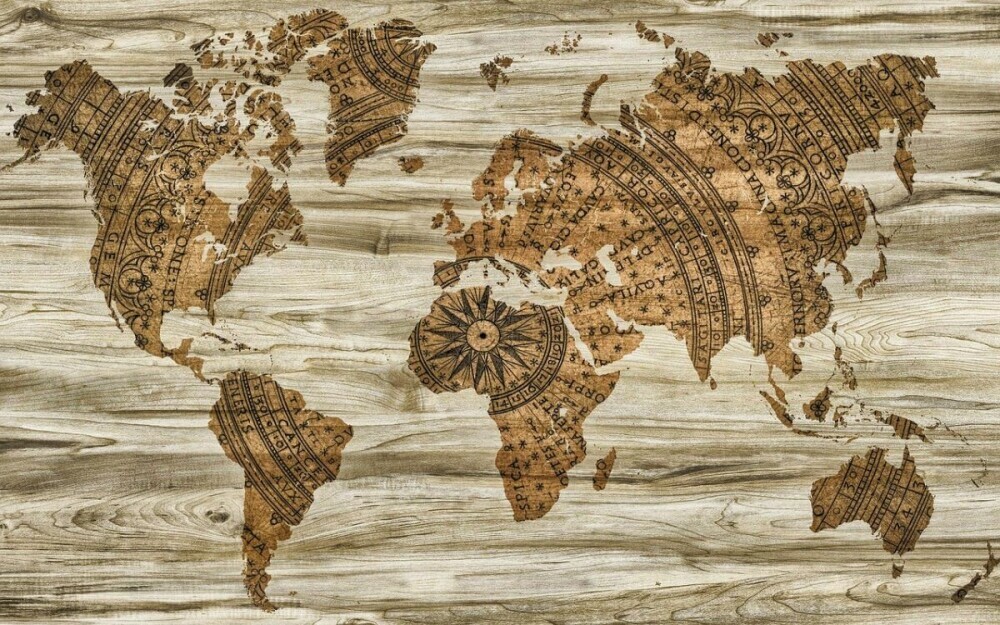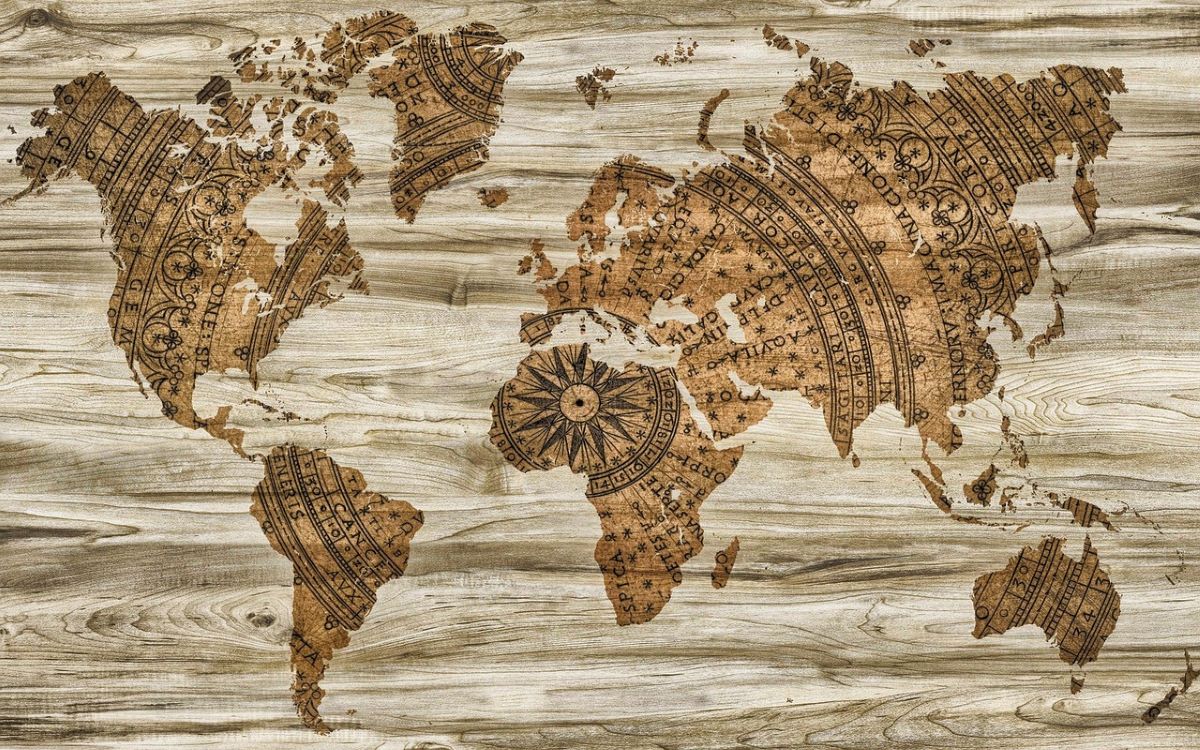
Jigsaw puzzles have been a beloved pastime for centuries, captivating minds and bringing people together across generations. Their history is as intricate and fascinating as the puzzles themselves, filled with stories of innovation, creativity, and the simple joy of fitting pieces together to reveal a larger picture.
The Birth of Jigsaw Puzzles
Although other types of puzzles date back thousands of years, the origins of what we currently recognize as jigsaw puzzles can be traced back to the 1700’s. The first puzzles were created by John Spilsbury, a London-based mapmaker and engraver, around 1760. Spilsbury’s initial intent was educational; he mounted maps on wooden boards and then cut around the borders of each country. These dissected maps were used as teaching tools to help children learn geography in a hands-on, engaging way. The idea quickly caught on, and soon, dissected puzzles became a popular educational resource.
Evolution and Innovation
As the popularity of jigsaw puzzles grew, so did the complexity and variety of the designs. In the early 1800’s, puzzles began to feature pictures of famous landmarks, historical scenes, and works of art. This shift from purely educational to recreational marked a significant evolution in the world of puzzles.
You might find it fascinating that jigsaw puzzles once represented more than a simple pastime; they held social prestige. In the early 1900’s, having an intricate jigsaw puzzle in your living room was a sign of culture and affluence. During this period, puzzles were still made of wood and cut by hand, a labor-intensive process that made them relatively expensive and owning one was quite the luxury.
When you think of the Industrial Revolution, you may imagine steam engines and textile mills, but it also revolutionized the jigsaw puzzle. Initially, jigsaw puzzles were made using scroll saws and fretsaws, which allowed for intricate and detailed cuts. These tools were manually operated and required significant skill and time to create each puzzle. It wasn’t until the early 1900’s that changes in materials and advancements in technology allowed for the mass production of puzzles.
Use of Plywood: Material to make the puzzles changed from solid wood to plywood, making them less expensive to construct.
Printing Presses: High-quality printing presses were used to print images onto cardboard or wood before the cutting process. The printed images were then glued onto the material, and the entire sheet was die-cut into puzzle pieces.
Lamination Equipment: Laminating machines were used to adhere the printed image securely to the puzzle material, ensuring durability and quality.
These advancements in tools and techniques enabled jigsaw puzzles to be produced more efficiently and in larger quantities, making them more accessible and affordable for the general public. The true potential of jigsaw puzzles began to unfold.
The Golden Age of Jigsaw Puzzles
The 1920s and 1930s are often referred to as the Golden Age of jigsaw puzzles. During this period, several factors contributed to the widespread popularity and production of jigsaw puzzles:
Economic Conditions: The Great Depression of the 1930s played a significant role in the popularity of jigsaw puzzles. As people faced economic hardships, they sought affordable forms of entertainment that could be enjoyed at home. Jigsaw puzzles, being relatively inexpensive and providing hours of entertainment, became a popular choice.
Marketing and Promotion: Puzzle manufacturers effectively marketed jigsaw puzzles as a wholesome, family-friendly activity. They were often promoted as a way to bring families together and provide a sense of accomplishment upon completion.
Innovative Designs: During this period, there was an explosion of creativity in puzzle design, including the introduction of interlocking pieces. Earlier puzzles often had pieces that simply abutted each other, making them more challenging to assemble. The interlocking design not only made puzzles easier to put together but also added a new layer of satisfaction, as pieces clicked into place with a satisfying snap. Interlocking pieces made them stay together more securely during assembly, reducing frustration and making it easier to see progress.
Puzzle Exchanges and Libraries: The rise of puzzle exchanges and availability to find them at libraries allowed people to enjoy a variety of puzzles without having to purchase them, further contributing to their popularity.
Jigsaw Puzzles in the Modern Era
The post-World War 2 era saw further innovations in puzzle design and manufacturing.
Transition to Cardboard: Eventually, the introduction of die-cutting technology and the need for more cost-effective production methods led to the transition from plywood to cardboard. Cardboard puzzles were cheaper to produce, lighter, and easier to handle, making them more accessible to a wider audience.
Printing Technology: Advances in printing technology allowed for higher-quality images and more vibrant colors. The 1960s and 1970s brought about the rise of specialty puzzles, including three-dimensional puzzles and those featuring popular culture icons and intricate art designs.
Digital Age: In recent years, the jigsaw puzzle market has continued to evolve with the advent of digital puzzles and online puzzle platforms. These digital versions offer a modern twist on the classic pastime, allowing enthusiasts to assemble puzzles on their computers or mobile devices. Despite this technological shift, traditional physical puzzles have remained popular, with many people appreciating the tactile experience and the sense of accomplishment that comes from completing a physical puzzle.
The Psychological and Social Benefits of Jigsaw Puzzles
The enduring popularity of jigsaw puzzles can be attributed not only to their entertainment value but also to the numerous psychological and social benefits they offer. Working on a puzzle engages both the left and right sides of the brain, promoting problem-solving skills, spatial awareness, and cognitive function. Puzzles also provide a form of mindfulness, allowing individuals to focus and relax, which can reduce stress and anxiety.
Jigsaw puzzles also bring people together. Whether it’s a family gathered around the dining table or friends working on a challenging puzzle together, this activity fosters collaboration and communication. It’s a timeless way to bond, share stories, and create memories. For tips on solving jigsaw puzzles, see my article Tips Solving Jigsaw Puzzles. Also, you may want to consider framing your completed puzzle. For tips and tricks on that topic, see my article How To Glue A Jigsaw Puzzle For Framing.
Final Thoughts
From their humble beginnings as educational tools to their status as a beloved pastime, jigsaw puzzles have a rich and fascinating history. They have evolved from hand-cut wooden maps to mass-produced cardboard creations and now include digital formats, yet the essence of the puzzle remains the same. It’s the joy of discovery, the satisfaction of fitting the pieces together, and the pleasure of seeing a beautiful picture come to life. Jigsaw puzzles are more than just a hobby; they are a testament to human creativity and ingenuity, offering endless hours of enjoyment for people of all ages.
Follow us on Facebook, Instagram, YouTube and Pinterest for more articles, tips, tricks and giveaways!
PuzzleSolverPro is reader-supported. When you buy via links on our site, we may earn an affiliate commission at no extra cost to you. It’s a simple way you can support our mission to bring you quality content.



Wow! I never imagined the origins of jigsaw puzzles would be so fascinating. Learning that they were initially used to teach geography and later evolved into a popular form of entertainment, especially during the Great Depression, really surprised me. It’s amazing how something educational became a beloved pastime! The evolution from meticulously handmade pieces of art, often displayed as statement pieces in living rooms, to the mass-produced and diverse puzzles of today shows how they’ve adapted to modern times while still being cherished for their cognitive and social benefits.
Hey Cassie! Thanks for the thoughtful comments on this article. I also learned quite a bit while doing the research for it. It is amazing the many things in our lives that we don’t necessarily think about how they came about, and the people/places involved in their discovery. Take care!
Robert
Hello Robert,
‘When Were Jigsaw Puzzles Invented?’. I must say, it was a fascinating read.Your comprehensive history of jigsaw puzzles, tracing their origins, evolution, and significance in society, was enlightening. The way you highlighted the technological advancements that have shaped the puzzle industry and the psychological and social benefits of engaging in this activity was truly insightful.
I am particularly grateful for the piece of history you shared with us about this popular game. It was intriguing to learn about the transition of jigsaw puzzles from educational tools to recreational pastimes, and how they have evolved with technological advancements.
Your work has not only enriched my understanding of this timeless pastime but also deepened my appreciation for it. Thank you for sharing this valuable information with us.
Best Regards,
Eric
Thank you for the thoughtful comments, Eric. I am always pleased when my articles meet or exceed the expectations of my readers. Take care!
Robert